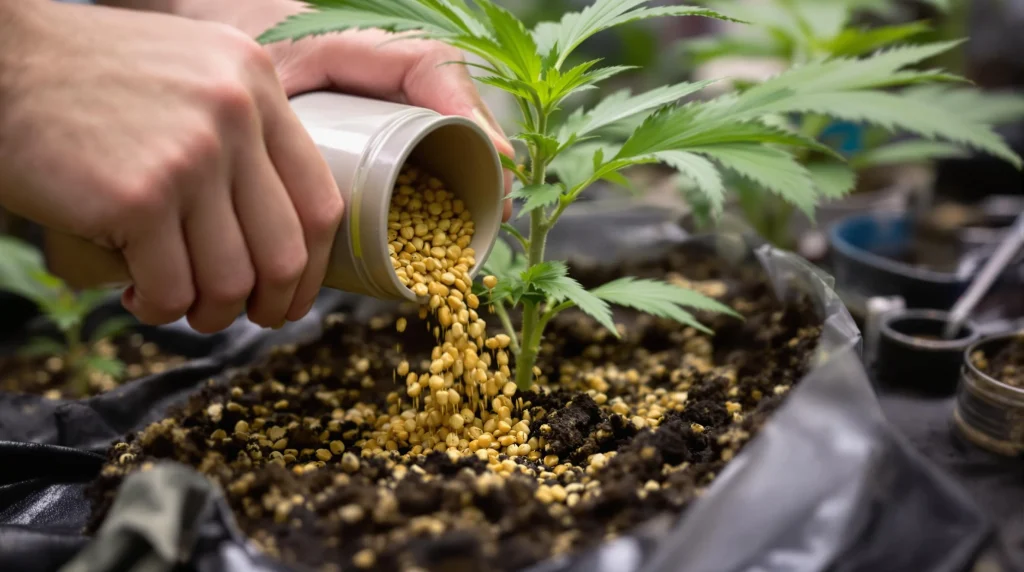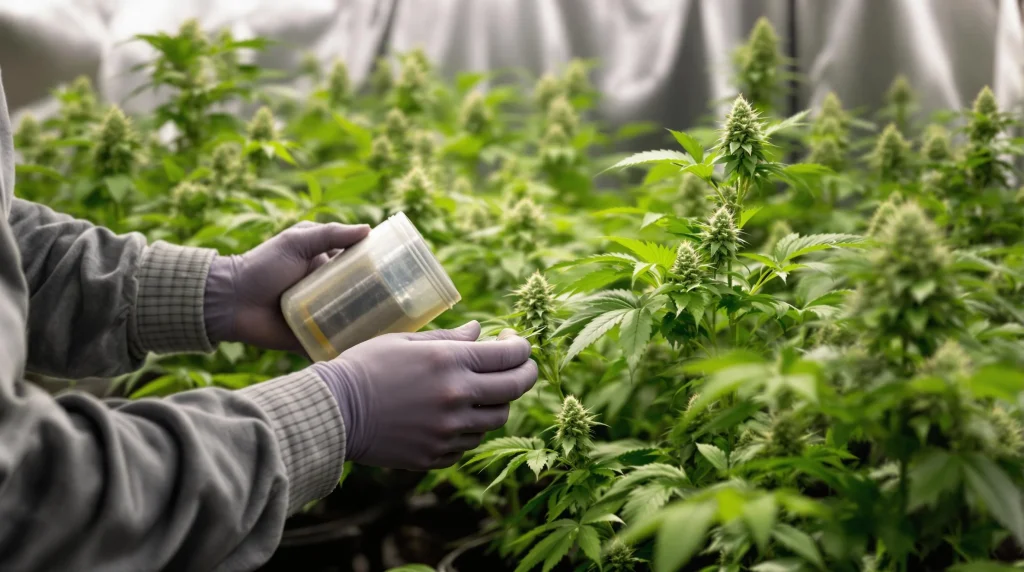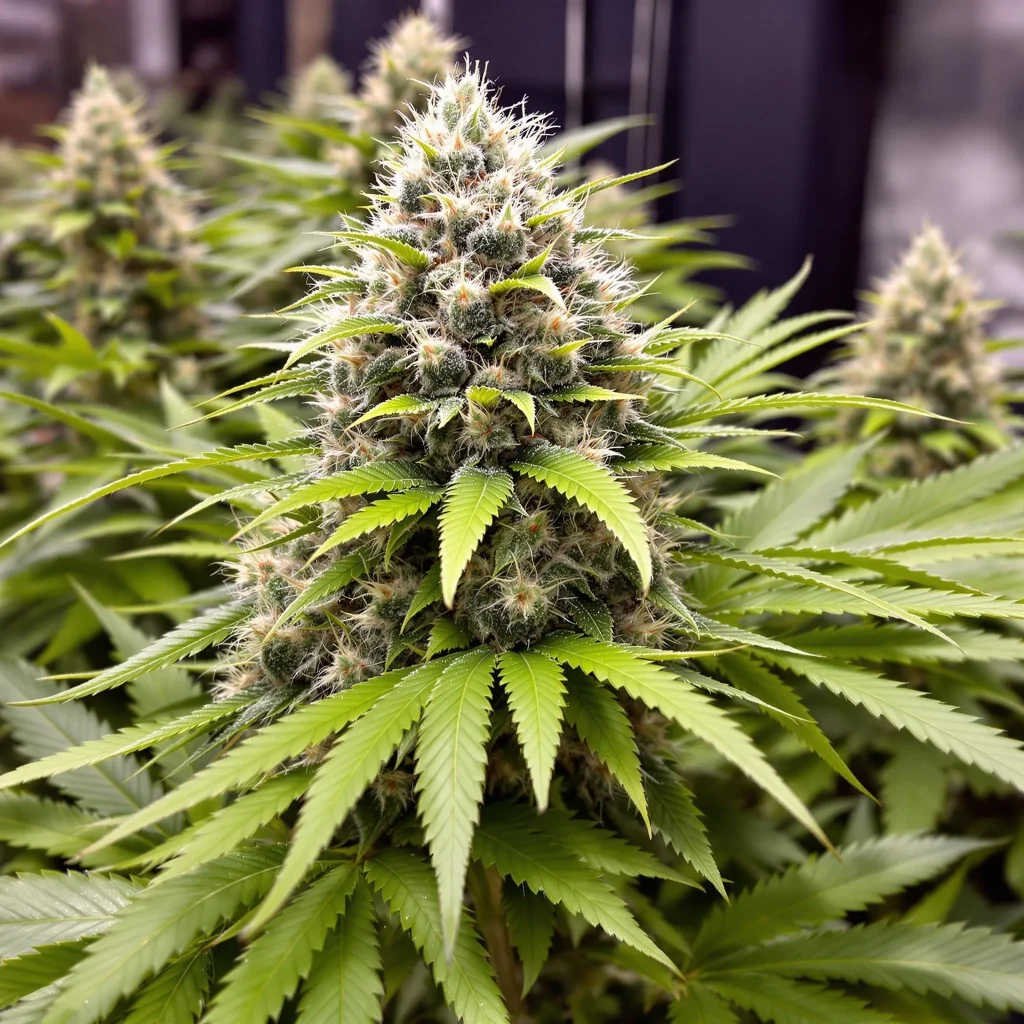Why Fertilizers Matter During the Budding Stage
Best Fertilizer Mix for Budding Cannabis: Essential Tips. During the budding stage, cannabis plants redirect their energy from vegetative growth to flower production. This crucial phase demands specific nutrients to support bud development, density, and potency. A well-balanced fertilizer ensures your plants receive the necessary macronutrients and micronutrients to thrive, leading to healthier flowers and higher yields. Providing the right nutrition during this phase can significantly impact the resin production, terpenes, and cannabinoid content, which are essential for creating high-quality cannabis.
Failing to provide the right nutrients during this phase can result in underdeveloped buds, reduced cannabinoid content, and an overall decrease in quality. Using a tailored fertilizer mix helps optimize the plant’s energy for producing resin-rich, aromatic flowers, setting the stage for a successful harvest, discover our guide on the best fertilizer for cannabis.
Key Nutrients for Healthy Cannabis Buds
Cannabis plants require a combination of macronutrients and micronutrients to produce robust buds. The three primary macronutrients, nitrogen, phosphorus, and potassium, play distinct roles during flowering. Nitrogen supports basic growth, but its demand decreases during this stage. Phosphorus aids in energy transfer, essential for bud development, while potassium strengthens overall plant health and flower production.
Micronutrients, such as calcium, magnesium, and sulfur, are equally vital. Calcium promotes strong cell walls, magnesium supports chlorophyll production, and sulfur enhances terpene profiles. Together, these nutrients ensure that your cannabis plants develop vibrant, flavorful, and dense buds during the flowering phase.

NPK Ratio for Budding
The NPK ratio, which stands for nitrogen, phosphorus, and potassium, is a key factor in choosing the right fertilizer. During the budding stage, a lower nitrogen and higher phosphorus and potassium ratio is ideal. For early flowering, an NPK ratio like 1:3:2 is suitable, while later stages may benefit from a 0:3:3 mix.
Adjusting the NPK ratio to match the flowering phase ensures that your plants receive targeted nutrition. This approach maximizes flower density and cannabinoid production, creating resin-rich buds that meet both potency and quality expectations.
Essential Components of a Fertilizer Mix
A complete fertilizer mix for budding cannabis must include phosphorus, potassium, and micronutrients. Phosphorus facilitates genetic material synthesis and energy transfer, making it crucial for bud development. Potassium enhances plant structure, improves disease resistance, and regulates water usage, supporting overall plant health.
Micronutrients like calcium, magnesium, and sulfur play smaller yet vital roles in cannabis growth. These elements contribute to cell wall integrity, photosynthesis, and terpene production, respectively. Including these components in your fertilizer mix ensures optimal flower development and plant vitality.
Organic vs. Synthetic Fertilizers for Budding Cannabis
Choosing between organic and synthetic fertilizers depends on your growing preferences. Organic fertilizers, derived from natural sources, improve soil health by encouraging microbial activity. They release nutrients slowly, reducing the risk of overfeeding and nutrient burn, while enhancing the flavor and aroma of your buds.
Synthetic fertilizers provide precise nutrient ratios, making it easier to tailor feeding schedules to your plant’s needs. These fertilizers are fast-acting, offering immediate nutrient availability for rapid growth. Both options have their advantages, and selecting the right type depends on your growing goals and desired outcomes.
DIY Fertilizer Mix for Budding Cannabis
Creating a DIY fertilizer mix allows growers to customize nutrients based on their plants’ specific needs. For a simple blend, combine organic materials such as bone meal for phosphorus and kelp meal for potassium. This mix provides a balanced nutrient profile for the flowering phase.
Additional natural additives can further enhance bud development. For example, bat guano is an excellent source of phosphorus, while molasses feeds beneficial microbes in the soil. Compost tea is another valuable addition, introducing beneficial microorganisms and boosting overall plant health and bud quality.
Tips for Applying Fertilizer to Budding Cannabis
Proper fertilizer application is essential to avoid common mistakes. Feed your plants consistently, typically every one to two weeks, depending on their response and the type of fertilizer used. Adjusting the schedule based on plant needs ensures steady growth and minimizes the risk of nutrient deficiencies.
To prevent overfeeding, start with lower fertilizer concentrations and gradually increase as necessary. Monitor your plants closely for signs of nutrient burn, such as leaf tip discoloration. Tailoring your approach to each plant’s needs will help you achieve optimal results during the budding stage.
Common Mistakes with Fertilizers During Budding
Using the wrong NPK ratio is a frequent mistake during the flowering phase. Excess nitrogen can lead to excessive foliage growth at the expense of bud development. Choosing a fertilizer with higher phosphorus and potassium levels is crucial for promoting flower production. Overloading your plants with nutrients, however, can also cause root stress and reduced yields.
Another common error is ignoring pH levels, which can result in nutrient lockout. Maintain soil pH between 6.0 and 7.0 to ensure your plants can absorb nutrients effectively. Environmental factors, such as inconsistent temperature or humidity, should also be monitored to complement your fertilization efforts and prevent stress. Staying proactive with monitoring allows growers to catch and address issues early, ensuring healthy and productive plants.

FAQs About Fertilizer Mix for Budding Cannabis
What is the best NPK ratio for budding cannabis?
The ideal NPK ratio for budding cannabis depends on the flowering stage. For early flowering, a ratio of 1:3:2 works well, while late flowering benefits from a 0:3:3 ratio. These ratios prioritize phosphorus and potassium, essential for bud growth and resin production.
Can I switch fertilizers during the budding stage?
Yes, switching fertilizers is common as plants progress through different flowering phases. Transitioning to a mix with higher phosphorus and potassium levels supports advanced bud development. Always adjust gradually to prevent nutrient shock.
How do I know if my plants need more nutrients?
Signs of nutrient deficiency include yellowing leaves, slow growth, and weak bud development. Conduct regular inspections and adjust your fertilizer mix accordingly to address these issues. Monitoring plant health ensures they receive the nutrition needed for robust flowering.

